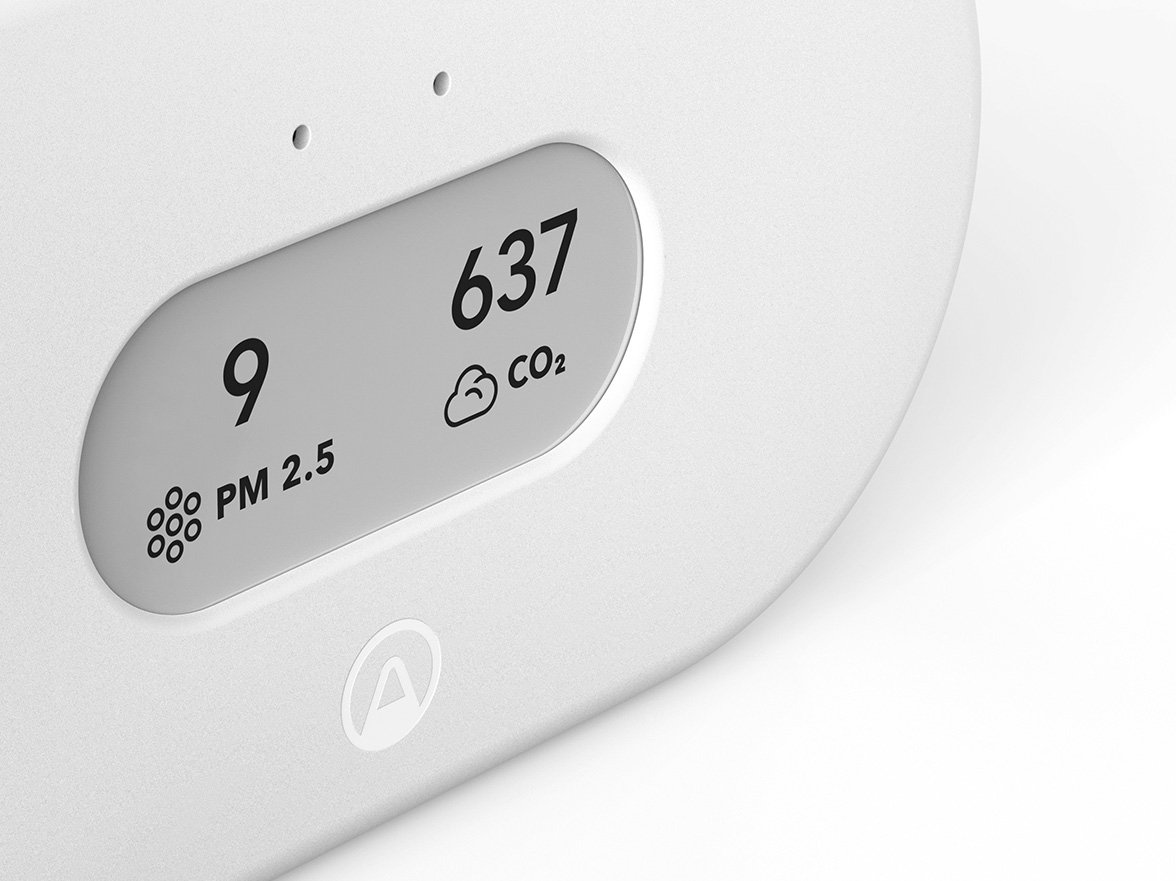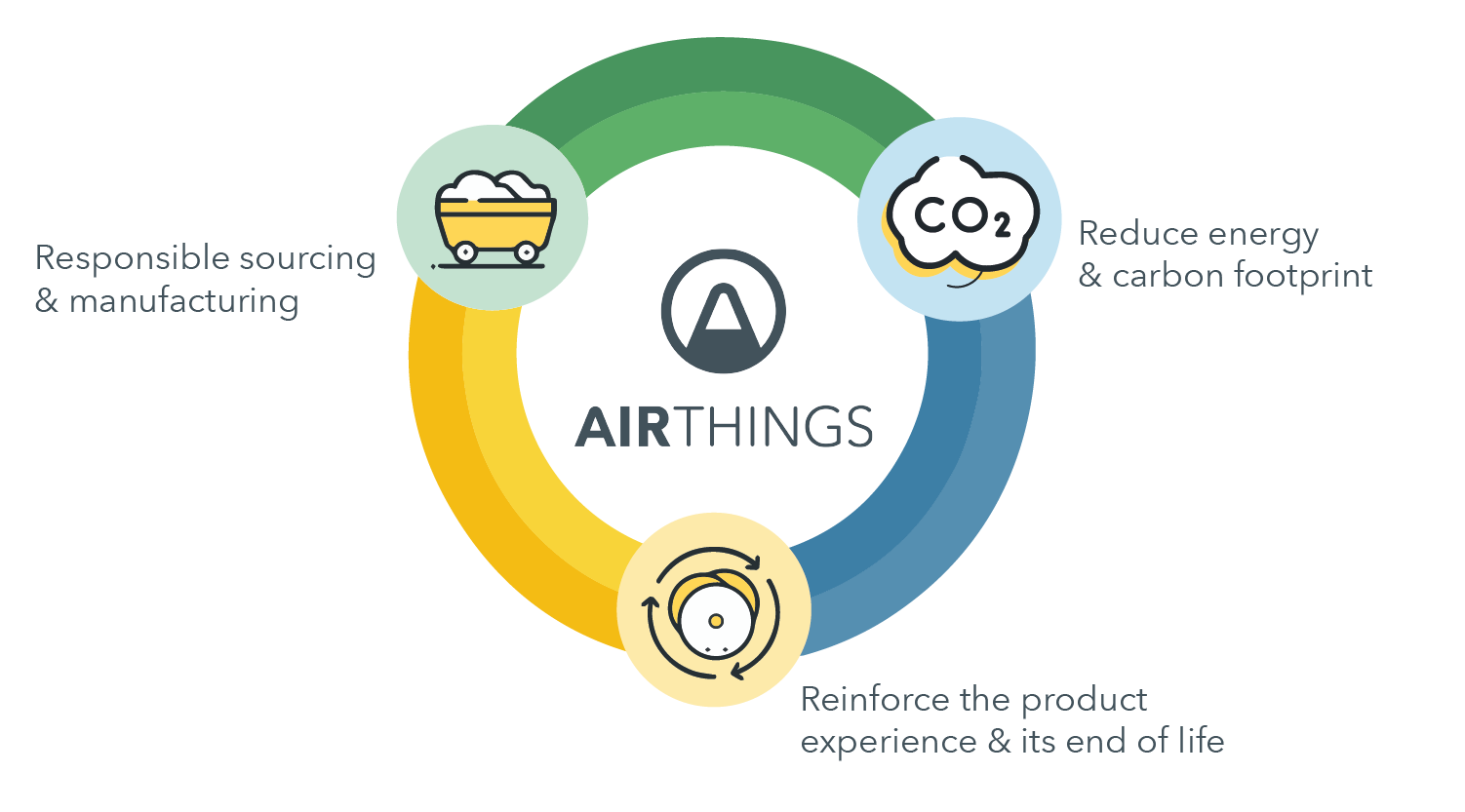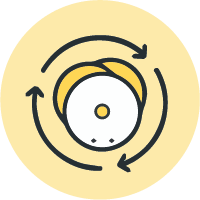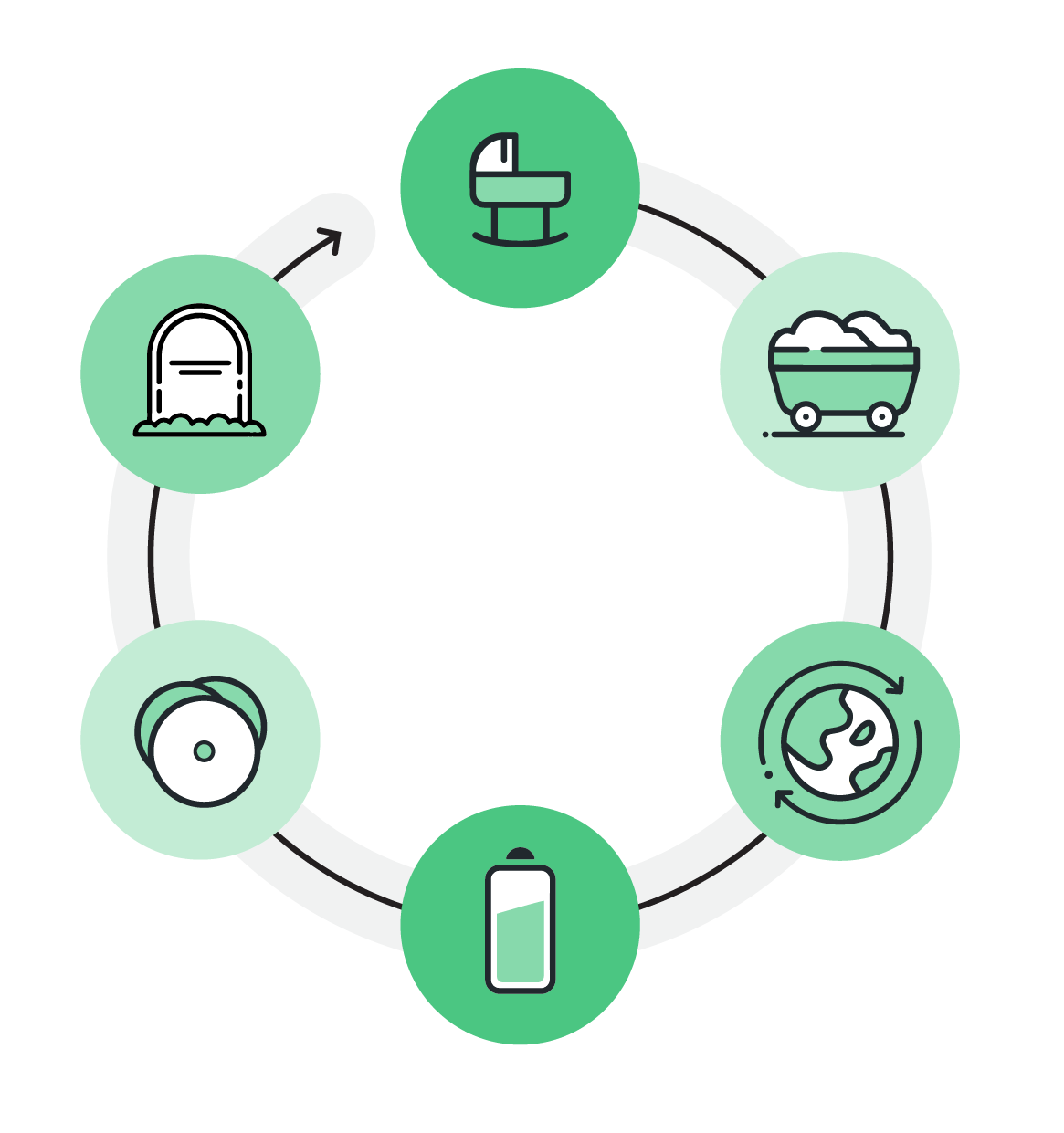We create valuable and loveable product experiences by educating and empowering the world on how the air we breathe affects our lives.
Responsible products = circular design, fair sourcing, and quality manufacturing
We are aware that it is key for any business to address the social and environmental issues of our time. This is why our internal actions for responsible products, will empower you to make sustainable decisions.

These principles structure Airthing's product design processes!
They are 3 key decision elements to discuss in the beginning, during, and at the end of the design phases of the products, to decrease our negative impact and increase our positive impact on the people and the planet.


We identified the pressure points through a life cycle assessment (LCA) to make more environmentally responsible products. An LCA traces all the components that go into the product, from their creation (cradle) to their disposal (grave). This includes everything from the raw materials that was mined to create the printed circuit boards (PCBs) to how the batteries are disposed of (recycled) once they no longer work, to the power consumption of the cloud servers that store the data.
Finally, what happens at the end of our product’s life? How much can be recycled? Can we close the loop? What are the negative environmental effects of batteries if disposed of incorrectly?
We analyzed the power consumption needed to enable the transfer of data to the cloud servers as well as, the energy used by the cloud servers. We also analyzed the energy used by the developers to actually create the code.
Since our products are battery-powered, their GHG emissions during their use are small. We are still working to increase their lifespan.

We start by gathering data on all the raw materials included in our products.
Then we look at the production process. How are our products put together? What impacts do these processes have on the environment? How much waste is created in these stages?
Our products are shipped all over the world. By planes, trains, and trucks, multiple means are used to reach our customers.
|
Finding |
Description |
|
|---|---|---|
Improving scope 3 |
|
|
Our advantage in the use phase |
|
|
Understanding logistics |
|
At Airthings we are committed to complying with the UN Universal Declaration of Human Rights, and the ten principles of the United Nations Global Compact. We seek suppliers committed to transparency and continuous improvement, who are moving forward on their sustainability and quality journey.
We expect our suppliers to share this commitment, thus all suppliers must commit to adhering to the Airthings Suppliers Code of Conduct (click here).
What we assess in our supplier's code of conduct
If any of these has been breached please report an incident.